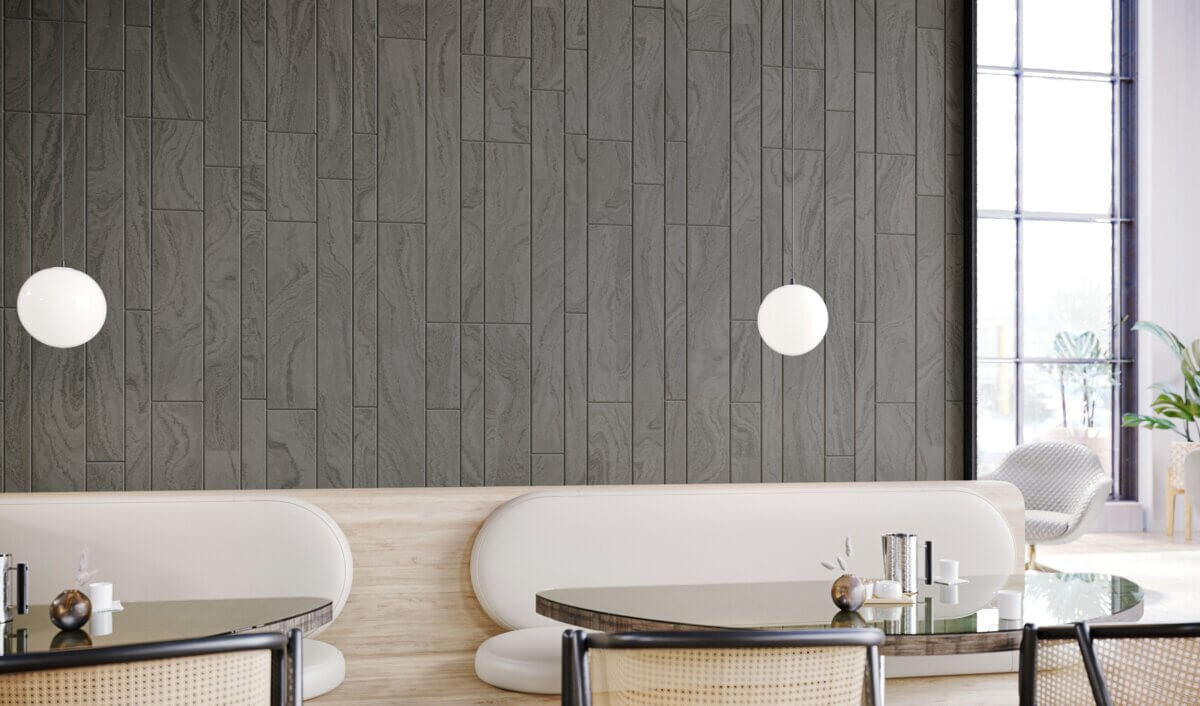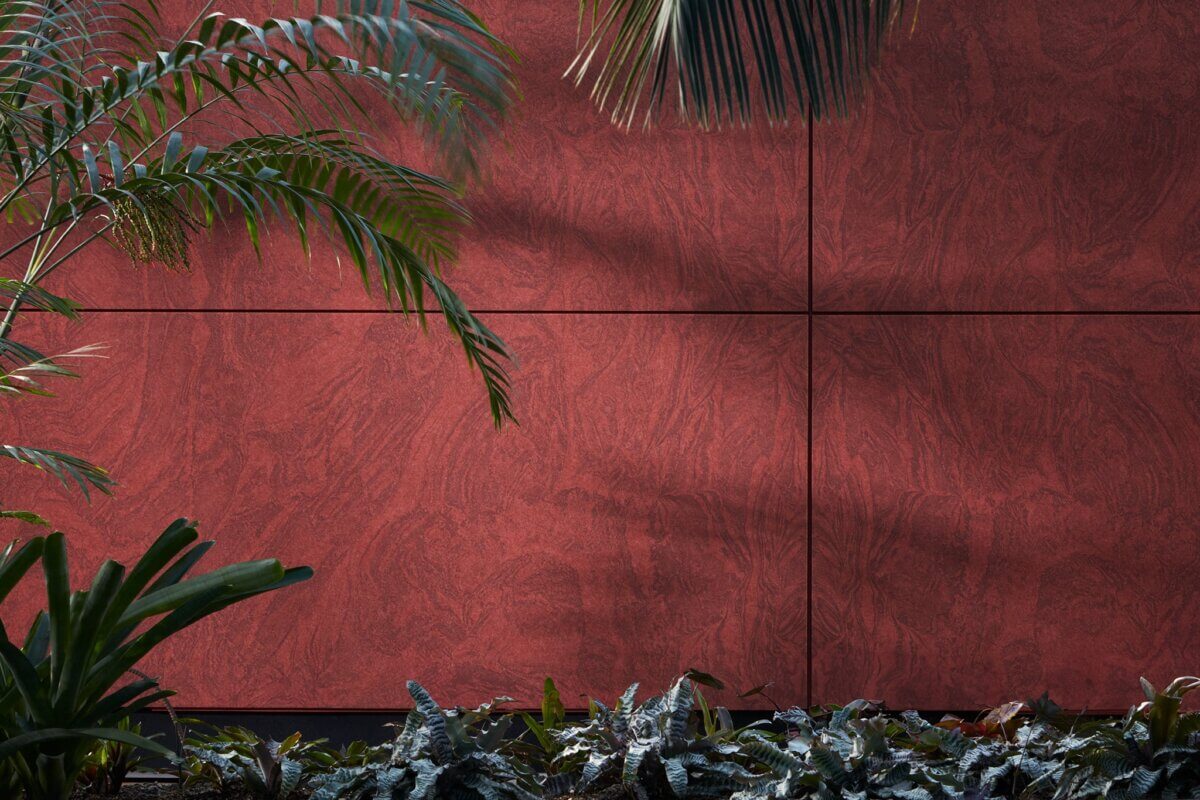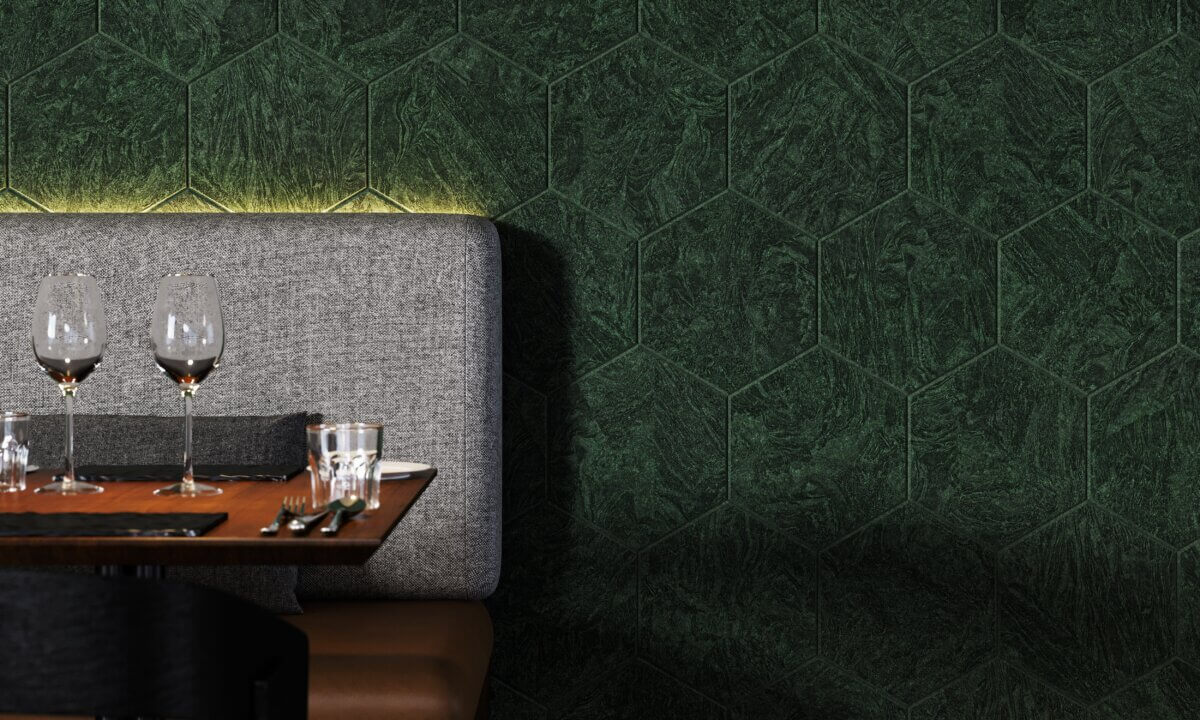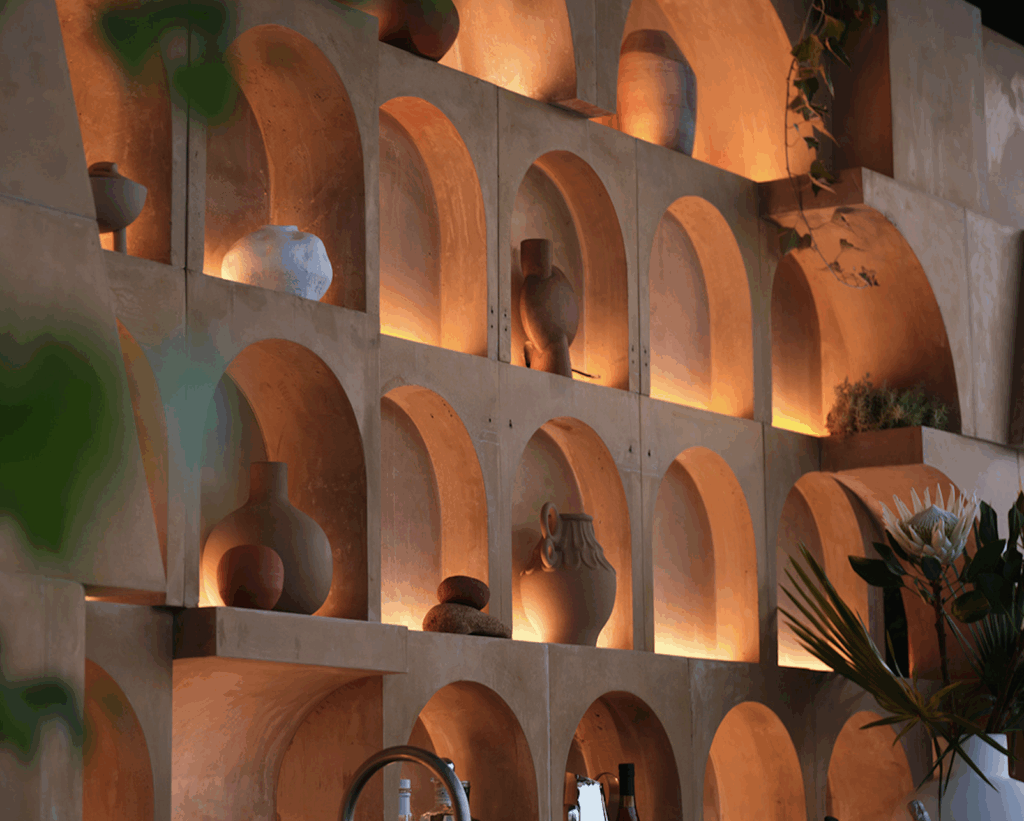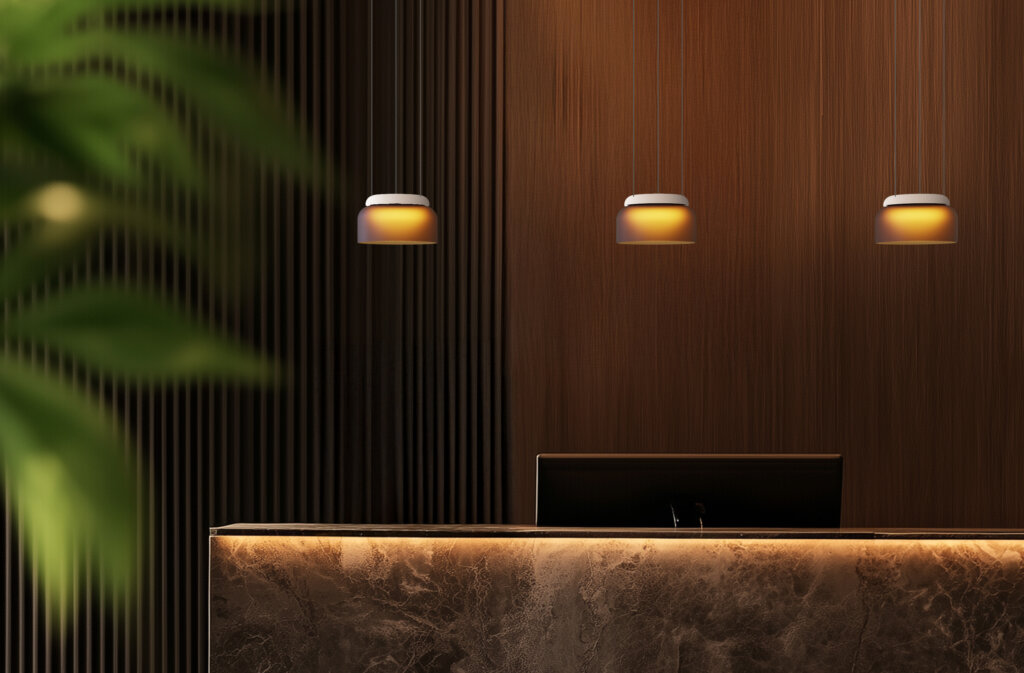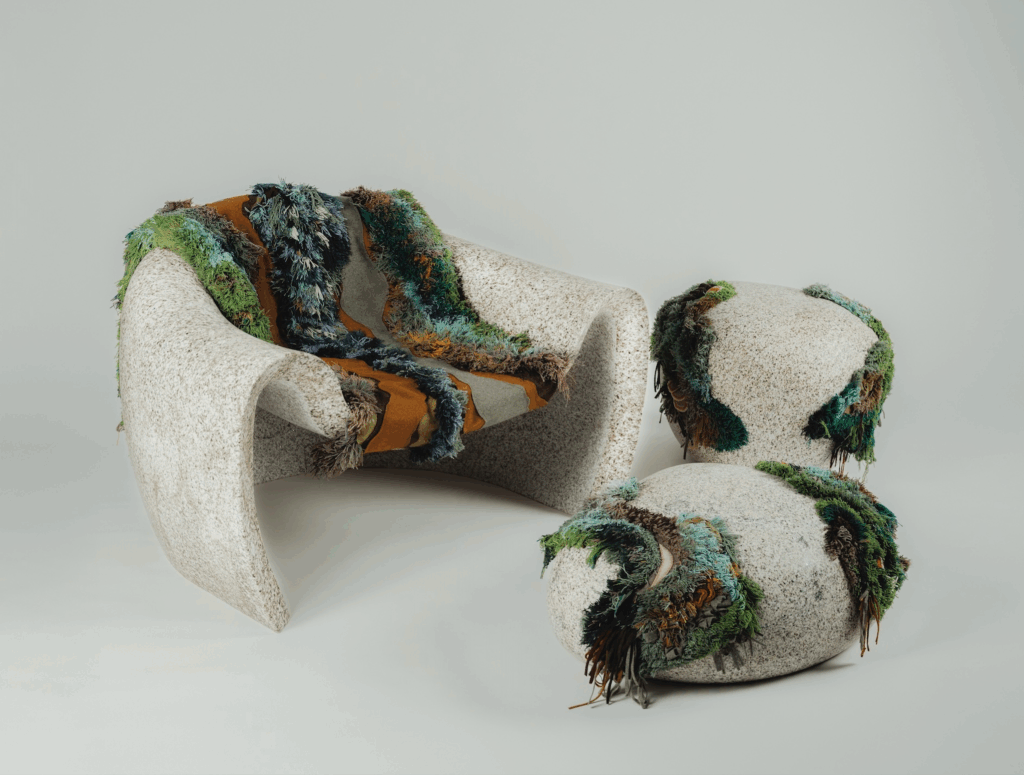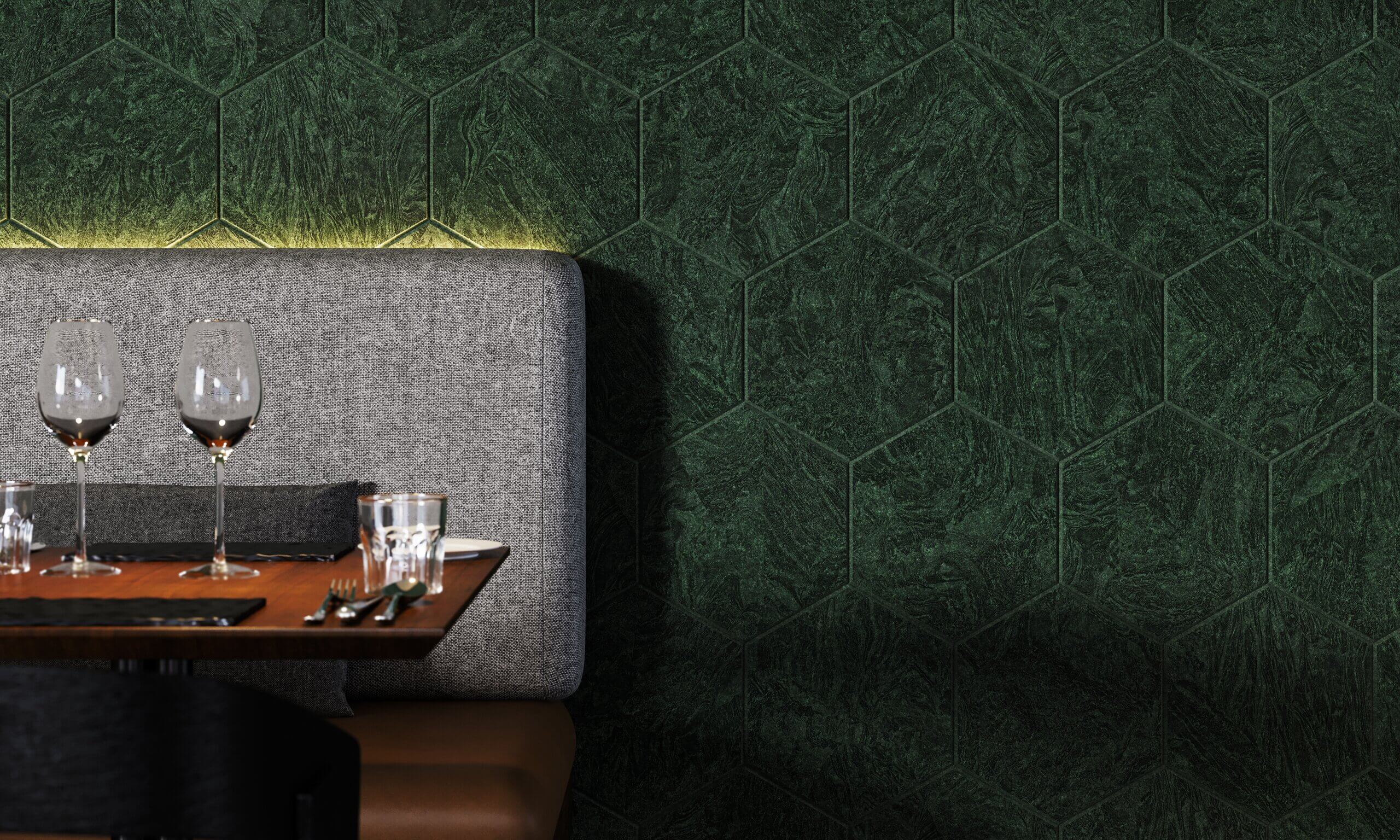
An innovator in acoustic paneling, Turf has released inumerable products that challenge the form, function, and look this type of application normally takes. The Chicago-based brand’s myriad solutions reflect the aesthetic and dimensions of material as varied as metal and paper. Its Beam collection takes on the quality of just that, the wooden trusses found in many prewar buildings. Somehow there’s no repetition to the graining like one might in other synthetic replications of timber. Turf doesn’t skimp on bold color, texture, or geometric expression either and carries a diverse range of options in this respect.
All of this comes with the brand’s commitment to sustainability—the broadest and strongest scene of the word. The company achieves this by upcycling pre-consumer content, implementing a product reuse program, and engineering products with better longevity, if not also timeless aesthetic appeal. Another area in which Turf is endeavoring to strive in wellness; especially when it comes to the sensorial condition of sound. For those of us particularly sensitive to noise, this latest development is music to our ears.
Turf partnered with Carolyn Ames Noble, Principal of Ames Design Collective, ASID, WELL AP, WELL Faculty, to create research around soundscapes for designed spaces. Uncovering the potential of biophony, geophony, and antrophony sound types, the study extrapolates the art of sensory design; how it can transform the interaction between people and their surroundings. It reveals how soundscapes can impact the physical body, circadian rhythm, and mental health.
“Chronic noise exposure can have detrimental effects on individuals occupying affected spaces,” says Kimteri Kim, WELL AP Principal Consultant. “These impacts include elevated blood pressure, increased risk of heart disease, sleep disturbances, and heightened stress levels. If not properly managed, noise can significantly impair people’s ability to work and function effectively.”
Noise can reduce productivity in offices by 65%. While in educational environments the decibel can reach 50 to 60, in restaurants and other hospitality venues it can climb to 80.
“The goal of sensory design in shaping inclusive spaces is to demonstrate how intentional, thoughtful design can create a meaningful and positive impact for those who activate and experience these environments,” says Faraz Shah, Turf Brand Director.
Putting these findings into practice boils down to the notion of reducing noise to embrace sound. “Integrating Turf products and acoustic solutions early in the design process not only helps in reducing noise but also serves as a source of inspiration, influencing and elevating the overall design vision,” he adds. Ensuring that this consideration is an integral part of the process from the outset is critical in achieving success.
There’s a responsibility for architects and designers to address sound design rather than letting it be an after-thought. This can be done with sound walks; consultations in which an expert walks through a project space to conduct both an objective and subjective assessment. Important questions to ask: Who are the inhabitants of the space or dwelling? How do you perceive needs? What is the function of the space? How should it sound?
Turf offers a wide range of creative and performative solutions in answering these specific requirements. “This approach can be further enhanced by encouraging design teams and end users to participate in a ‘listen-through’ of project spaces or immerse themselves in the environment to directly experience its acoustic impact,” Shah explains. “The goal is to create spaces that enhance focus, inspire creativity and exploration, foster meaningful collaboration, and provide space for rest and reflection-supporting well-being, productivity, and learning across educational, commercial/hospitality, and workplace.
Turf will be hosting the “How Sensory Design Shapes Inclusive Spaces” panel at ICFF 2025 on Sunday May 18 to introduce this research to a broader audience. “The conversation will highlight how sensory design, and its holistic approach will aid in not only promoting relaxation, but also in boosting creativity, lowering stress, and increasing cognitive function,” he concludes. “We hope to bring awareness to the impact noise has on the human body and how it can be alleviated with thoughtful acoustic design.”
If you are curious to discover more about Turf, check out their website, HERE
Follow Turf on Instagram and be sure to stop by their talk on Sunday, May 18 at 3pm in the Oasis. Register for ICFF 2025 now >>>
More from ICFF:
Designer Profile: Matthew Goodrich
Brand Spotlight: Vestre
